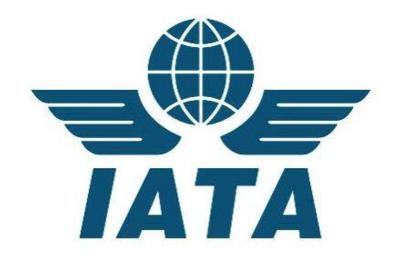Fri, Apr 08, 2016
February Down 5.6 Percent Over Same Month In 2015
The International Air Transport Association (IATA) has released data for global air freight markets showing air cargo volumes (measured in freight tonne kilometers or FTKs) suffered a 5.6% fall in February compared to February 2015. This is heavily skewed due to the impact of the US port strikes in early 2015 (which caused a spike in air freight) and Lunar New Year falling in February this year.

Comparing January and February 2016 performance to January and February 2014 reveals 6.3% volume in growth—equal to a 3.1% annualized growth trend.
“The air freight business remains a difficult one. February’s performance continues a weak trend. And there are few factors on the horizon that would see this change substantially. In the absence of an imminent resurgence of demand, the importance of improving the value proposition with modernized processes—the e-freight vision—remains a top priority,” said Tony Tyler, IATA’s Director General and CEO.
African airlines’ FTKs declined by 1.7% in February compared to February 2015. The largest economies in the region, Nigeria and South Africa, have suffered from the commodity slump over the past 18 months.
Asia-Pacific carriers, which carry almost 39% of all air freight, saw FTKs contract by 12.4% year-over-year in February. While this was the largest drop of any region, it also reflects the region’s carriers having benefited the most from the 2015 US port strike. And the region’s weak trading backdrop was exaggerated by the closure of many factories in Asia for the Lunar New Year Celebration. In February Chinese export values fell 25%.
European airlines’ demand fell by 2.4% in February. Business surveys of the region, particularly in Germany, do not give an upbeat assessment of prospects in the region. This is in line with the trend since the Global Financial Crisis: European freight volumes are barely any higher than in 2008.
Latin American carriers expanded by 2.7% in February. Markets in the region remain under pressure and Brazil is in its worst recession in 25 years. Volumes on the North-South American routes, however, are holding up.
Middle Eastern carriers were able to continue their consistent growth trend despite the statistical noise, expanding 3.7% in February. Over the past six months the major carriers in the region have cut their rate of route expansion, which may account for the relative slowdown in freight volume growth.
North American airlines saw FTKs fall 4.0% in February compared to February 2015. Looking ahead, the prospects for cargo growth will depend on the balance between a stronger domestic economy supporting import growth and a strong US dollar dampening exports.
(Source: IATA news release)
More News
From 2023 (YouTube Version): Legacy of a Titan Robert (Bob) Anderson Hoover was a fighter pilot, test pilot, flight instructor, and air show superstar. More so, Bob Hoover was an i>[...]
Get The Latest in Aviation News NOW on Instagram Are you on Instagram yet? It's been around for a few years, quietly picking up traction mostly thanks to everybody's new obsession >[...]
Aero Linx: B-52H Stratofortress The B-52H Stratofortress is a long-range, heavy bomber that can perform a variety of missions. The bomber is capable of flying at high subsonic spee>[...]
Altimeter Setting The barometric pressure reading used to adjust a pressure altimeter for variations in existing atmospheric pressure or to the standard altimeter setting (29.92).>[...]
"Knowing that we play an active part in bettering people's lives is extremely rewarding. My team and I are very thankful for the opportunity to be here and to help in any way we ca>[...]
 Classic Aero-TV: Remembering Bob Hoover
Classic Aero-TV: Remembering Bob Hoover ANN FAQ: Follow Us On Instagram!
ANN FAQ: Follow Us On Instagram! ANN's Daily Aero-Linx (05.15.24)
ANN's Daily Aero-Linx (05.15.24) ANN's Daily Aero-Term (05.15.24):Altimeter Setting
ANN's Daily Aero-Term (05.15.24):Altimeter Setting Aero-News: Quote of the Day (05.16.24)
Aero-News: Quote of the Day (05.16.24)



